Lei Feng network (search "Lei Feng network" public number concerned) : According to the author of this article Dr. Chen Chixiao, a postdoctoral researcher at the University of Washington, United States, said (micro signal: silicon_talks) master.
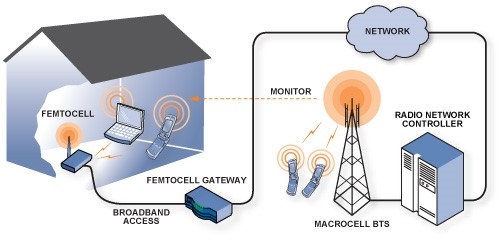
Compared with 3G and 4G, emerging technologies of 5G are mainly millimeter wave and beamforming. In addition, there has been a new evolution in 4G technologies such as carrier aggregation and Multiple Input Multiple Output (MIMO). So, what challenges does it pose to IC design? Today, we come to predict the new trend of integrated circuits under the 5G challenge—small base stations.
One day, at the China Telecom service station opposite my home, there was a high-quality iron shelf with two metal boxes and two high-rising antennas. However, under the opposition of the female compatriots in the district who often held square dance gatherings, a few days later, China Telecom could only embarrass the iron shelf.
I cannot tell you whether the base station will produce radiation, but do you really think that the mobile operator will withdraw the base station? If you withdraw, then your phone's signal number should be the lowest one.
The most immediate change in the development of Moore's Law turned giants into pocket pills. Please look at the following base station leader today:

The base station Vs. base station you think actually looks like.
Many people will ask a question. Is the street on the right not a street lamp? This is a small base station! Can be disguised in street lights, bus stop signs, and any obscure corner chameleon.
With the development of integrated circuits, the SoC of the terminal chip has gradually come to a dead end, and the SoC of the base station chip is developing. As a result, the small base station became an important technical measure against the square dance aunt during the 4G era.
The question arose. Under 5G, will micro base stations make more sense?
At present, the size of a small base station is mainly limited to the size of an antenna. It is generally required that the size of the antenna is in the same order of magnitude as the wavelength of the electromagnetic wave, and the wavelength of the electromagnetic wave is the speed of light divided by the frequency. The carrier wavelength of 3G/4G is in the decimeter level, and the antenna length of the small base station is also similar. But at 5G, the carrier wavelength has become millimeter-level (this is why it is called "millimeter wave"). So the antenna can be made smaller and do more (for beamforming and Massive MIMO).
The size and designation of a small cell has evolved from a Micro Cell, a Nano Cell, and a Pico Cell to a Femto Cell. Their main application scenario is in densely populated areas, covering peripheral communications that large base stations cannot reach. In particular, 5G communication, which is called 100Mbps-1GMbps, is completed. The small base station allows you to spare time and work out a set of high-definition "Rights of the Game" in one minute. In the future, it can be expected that it will be as small as your home router, hidden in the corner of the CBD and the large shopping mall.

Micro, nano, skin, fly... mathematical definition table
The implementation of the small base station, in addition to the rapid advancement brought about by Moore's Law, there are many hard-working silicon workers. For example - Digital Pre-distortion for Nonlinear Power amplifier (Digital Pre-distortion for Nonlinear Power amplifier).
The small base station is not only far smaller than the large base station in terms of scale, but it is also necessarily an exponential decline in power consumption. After all, it accounts for 220V of utility power. With the evolution of integrated circuits, although the computational power consumption continues to decrease, the transmit power of the RF transmitter signal does not change much. After all, this is determined by the protocol sensitivity. In large base stations, we can use non-silicon processes to achieve high-linearity power amplifiers. But in the ideal small base station, PA is also made SoC. CMOS technology is famous for its low efficiency in the linear operating range, where power is about to saturate at high power output. It is expected that simply being confined to the linear zone is to “look at the skyâ€.

So the genius silicon worker proposed to find the inverse function of the nonlinear PA in the digital domain, and then output a nonlinear digital control code. When the two are superimposed, there is a linear high-efficiency output.
Then, the solution of this problem is once again spread to the frequency domain. When the transfer function of the broadband power amplifier in the band fluctuates, the inverse function of its fluctuation is also found in the digital domain, and the modulation result with frequency gating characteristics is given. , and then a superimposed, you can see the same amplitude of the EMV mask.
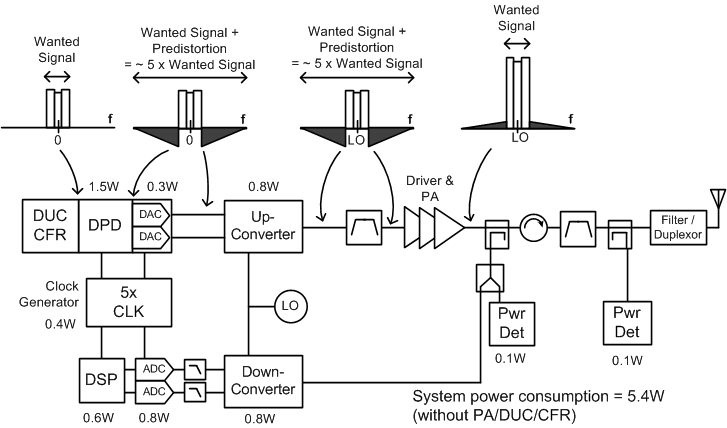
Digital pre-distortion transmission system
The core of this idea is to convert the RF power consumption that does not change with Moore's Law into the digital power consumption that follows Moore's Law. The so-called As much digital as possible.
With all sorts of hard work, the 5G small base station became a Pokemon Go sprite scattered around the world. So new problems have emerged, so many small base stations, how to do if it is stepped on? Moreover, its flexibility is reflected in its freedom, convenience and configurability. If it is necessary to call the operator to send a car, is it still appropriate?
The answer is obviously negative.
Finally, we want to introduce another mechanism in the small base station implementation - Self Organizing Network (SON) . In order to better and more easily configure, optimize, and repair small groups of base stations with flexibility, adaptive networking technology will replace the complex cost of intervention in large base stations.
Relevant investigations pointed out that in the 5G application scenario, more than 50% of communications resources are occupied by 1% of terminals, and this 1% is often in the center of large cities and commercial areas. The actual communication scenarios in these areas are complex and require highly configurable networks. What's more, the Internet of Things in these regions is also abundant. Under various conditions, SON can be seen as a bridge between 5G communication and IoT communication, providing a more effective networking communication system for such areas.
If a service-oriented ad hoc network becomes possible, the actual operation rights of the future small base stations may be transferred from the mobile operators to the hands of the partial converter entity merchants and other small business operators. The future "network management" not only govern the exchanges and wireless networks, but also control urban mobile communications. Sounds great?
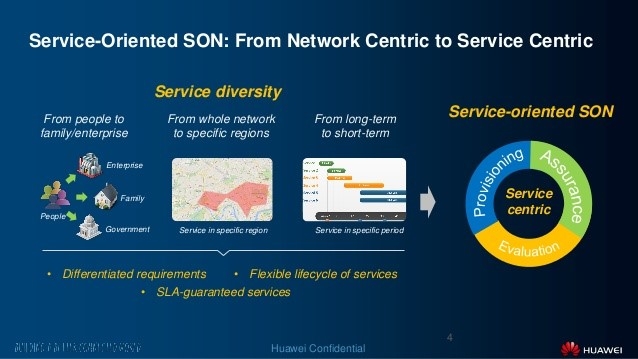
Service-oriented development trend of autonomous networks (Source: Huawei)
Due to a series of reasons such as social and communications, small base stations in the future will gradually become important growth points in 5G communications that are different from large base stations, especially in urban CBD areas. The millimeter wave will cause the camouflage of the small base station to be more difficult to distinguish. At the same time, various digital calibration methods also realize the low power consumption transition from the large base station to the small base station. At the same time, ad hoc network technology may cause major changes in the 5G business model.
5G Communication Technology Series Articles:
"Interpretation of 5G Communication Technology | Massive Antenna Array Technology"
"Interpretation of 5G communication technology | How does beamforming add wings to 5G? 》
"5G communication technology interpretation | how to achieve 10 times faster than 4G? Millimeter wave technology is the key to 5G"
STF274 Series Brushless AC Alternator
STF274 Series Alternator Suppliers
1.Easy to be connected with power network or other generators. Standard 2/3 pitch windings
check excessive midline current.
3.Balanced rotor with single or two sealed ball bearings
4.Wide range of Flange adaptor and single bearing coupling disc
5.Convenient installation and maintenance with easy access to terminals, rotating diodes andcoupling bolts
6.Meet leading standards

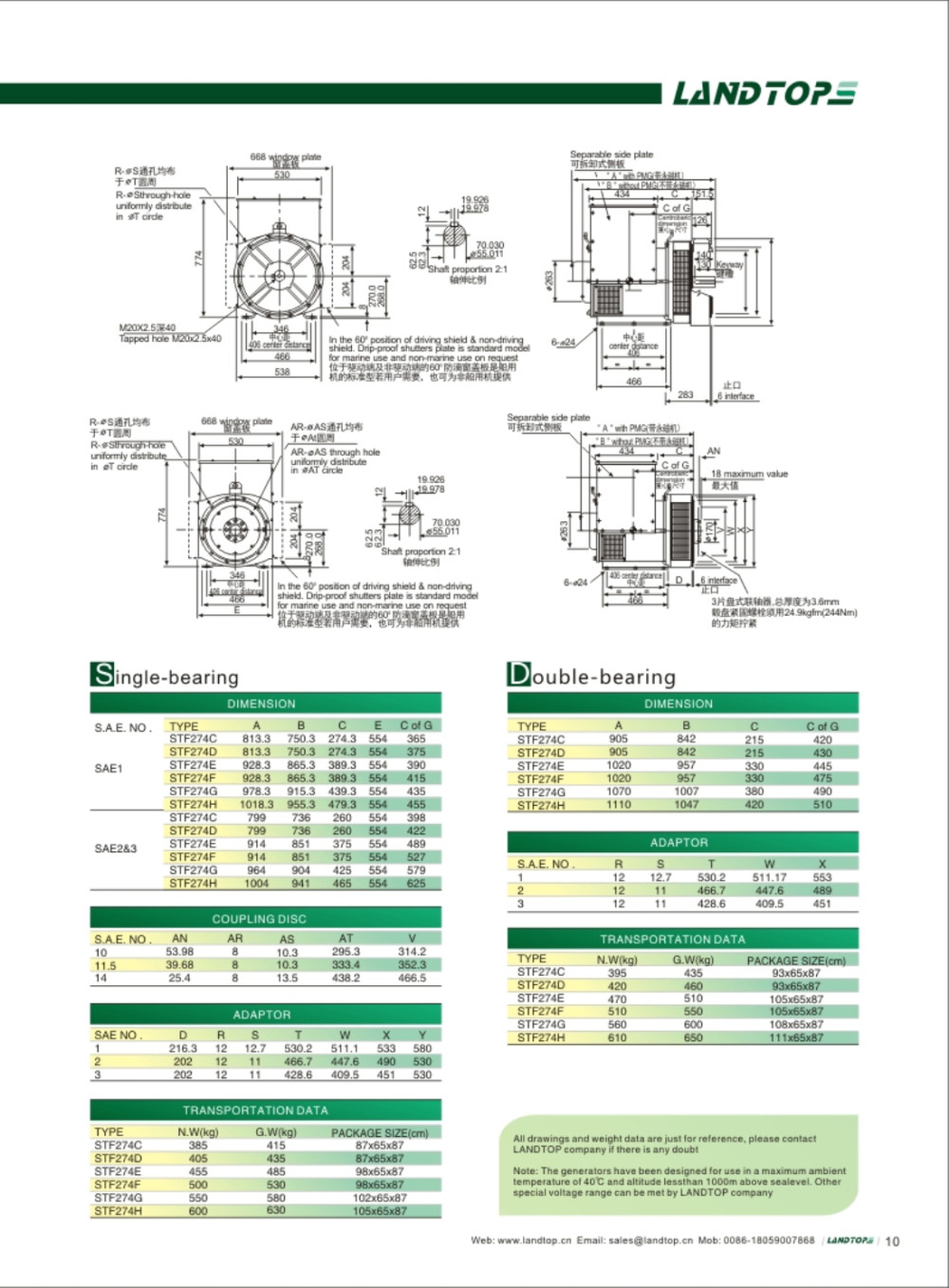
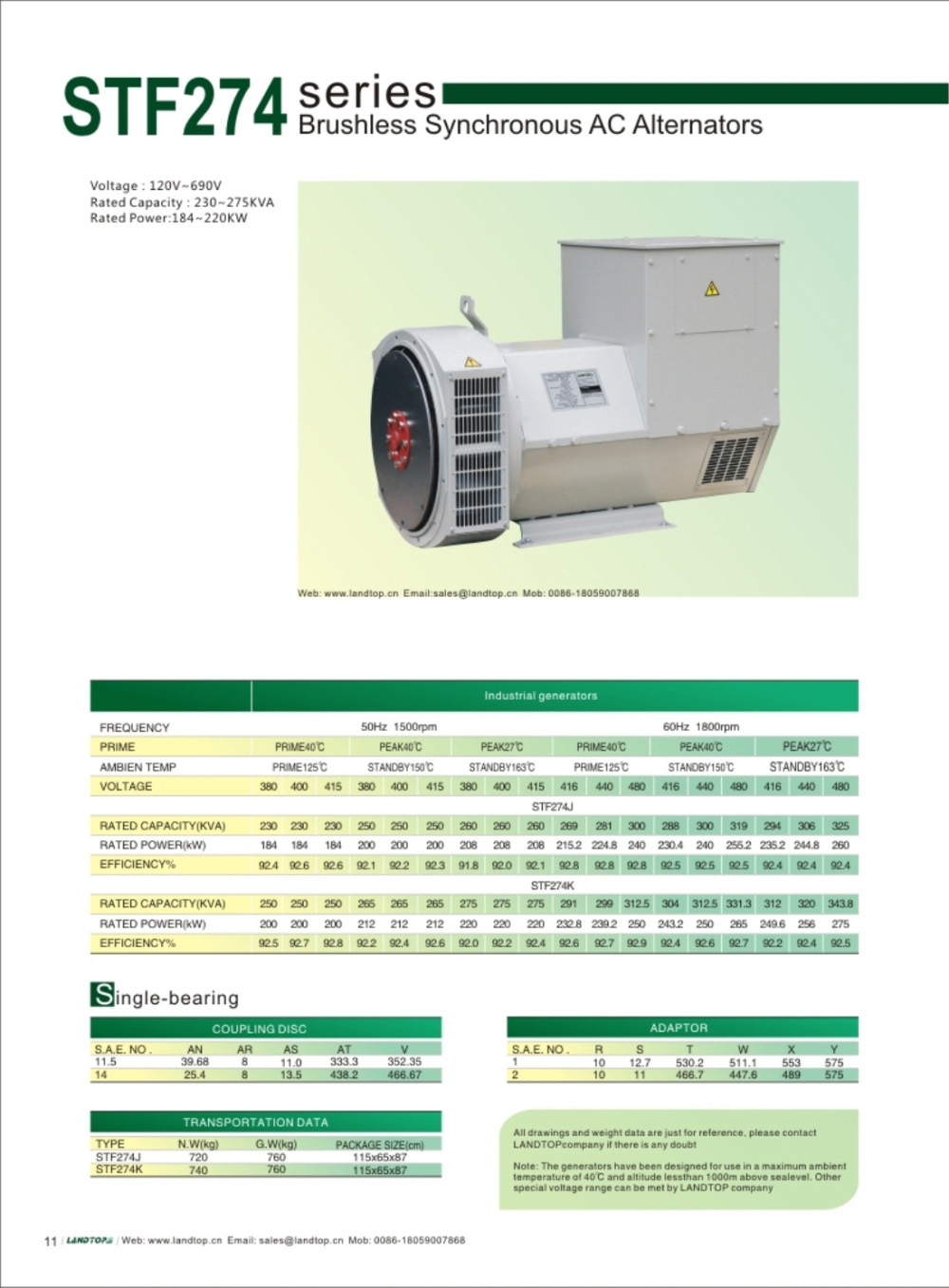
Brushless Dynamo,Three Phase Generator,Stamford Brushless Dynamo Generator,STF274 Series Brushless AC Alternator
FUZHOU LANDTOP CO., LTD , https://www.landtopco.com
